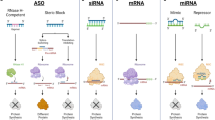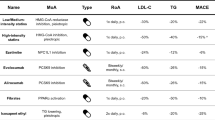Abstract
Inflammation has a fundamental role in mediating all stages of atherosclerotic disease. The key role of oxidation in linking lipids and inflammation to atherosclerosis is compelling and supported by experimental evidence. However, the relevance of the antioxidant hypothesis for the treatment of patients with atherosclerosis has not been definitively proven. Probucol has reduced post-percutaneous coronary intervention (PCI) restenosis and progression of carotid atherosclerosis in clinical trials. The antioxidant/vascular protectant AGI-1067 has also been effective at preventing atherosclerosis in all tested animal models. The nonintervened reference coronary segments of the PCI vessel demonstrated improvements with AGI-1067 in the Canadian Antioxidant Restenosis Trial-1 (CART-1), evidence supportive of a clinical effect on slowing atherosclerosis progression. Results of randomized trials with the “antioxidant” vitamins have been disappointing, but there are potentially important problems associated with their use, including their potential pro-oxidant effects. Two important trials that test the antioxidant/anti-inflammatory hypothesis are ongoing with AGI-1067: CART-2, which assesses its value for the reduction of both atherosclerosis progression in non-PCI vessels and post-PCI restenosis; and Aggressive Reduction of Inflammation Stops Events (ARISE), which is evaluating the effects of AGI-1067 on hard cardiovascular outcomes.
Similar content being viewed by others
References and Recommended Reading
Ross R: Atherosclerosis—an inflammatory disease. N Engl J Med 1999, 340:115–126.
Kunsch C, Medford RM: Oxidative stress as a regulator of gene expression in the vasculature. Circ Res 1999, 85:753–766.
Cushing SD, Berliner JA, Valente AJ, et al.: Minimally modified low density lipoprotein induces monocyte chemotactic protein 1 in human endothelial cells and smooth muscle cells. Proc Natl Acad Sci USA 1990, 87:5134–5138.
Marui N, Offermann MK, Swerlick R, et al.: Vascular cell adhesion molecule-1 (VCAM-1) gene transcription and expression are regulated through an antioxidant-sensitive mechanism in human vascular endothelial cells. J Clin Invest 1993, 92:1866–1874.
Rajavashisth TB, Andalibi A, Territo MC, et al.: Induction of endothelial cell expression of granulocyte and macrophage colony-stimulating factors by modified low-density lipoproteins. Nature 1990, 344:254–257.
Bourcier T, Sukhova G, Libby P: The nuclear factor kappa-B signaling pathway participates in dysregulation of vascular smooth muscle cells in vitro and in human atherosclerosis. J Biol Chem 1997, 272:15817–15824.
Thomas CE, Jackson RL, Ohlweiler DF, et al.: Multiple lipid oxidation products in low density lipoproteins induce interleukin-1 beta release from human blood mononuclear cells. J Lipid Res 1994, 35:417–427.
Rajagopalan S, Meng XP, Ramasamy S, et al.: Reactive oxygen species produced by macrophage-derived foam cells regulate the activity of vascular matrix metalloproteinases in vitro. J Clin Invest 1996, 98:2572–2579.
Ikeda H, Koga Y, Oda T, et al.: Free oxygen radicals contribute to platelet aggregation and cyclic flow variations in stenosed and endothelium-injured canine coronary arteries. J Am Coll Cardiol 1994, 24:1749–1756.
Roberts MJ, Young IS, Trouton TG, et al.: Transient release of lipid peroxides after coronary artery balloon angioplasty. Lancet 1990, 336:143–145.
Iuliano L, Pratico D, Greco C, et al.: Angioplasty increases coronary sinus F2-isoprostane formation: evidence for in vivo oxidative stress during PTCA. J Am Coll Cardiol 2001, 37:76–80.
Kugiyama K, Kerns SA, Morissett JD, et al.: Impairment of endothelium-dependent arterial relaxation by lysolecithin in modified low-density lipoproteins. Nature 1990, 344:160–162.
Tardif JC, Grégoire J, Bourassa MG: Antioxidants and restenosis—human studies. In Antioxidants and Cardiovascular Disease. Edited by Tardif JC, Bourassa MG. Amsterdam: Kluwer; 2000:175–194.
Christen WG, Hennekens CH: Antioxidant vitamins and cardiovascular disease: evidence from observational epidemiologic studies and randomized trials. In Antioxidants and Cardiovascular Disease. Edited by Tardif JC and Bourassa MG. Amsterdam: Kluwer; 2000:135–144.
The Alpha-Tocopherol, Beta-Carotene Cancer Prevention Study Group: The effect of vitamin E and beta carotene on the incidence of lung cancer and other cancers in male smokers. N Engl J Med 1994, 330:1029–1035.
Omenn GS, Goodman GE, Thornquist MD, et al.: Effects of a combination of beta carotene and vitamin A on lung cancer and cardiovascular disease. N Engl J Med 1996, 334:1150–1155.
Stephens NG, Parsons A, Schofield PM, et al.: Randomized controlled trial of vitamin E in patients with coronary disease: Cambridge Heart Antioxidant Study (CHAOS). Lancet 1996, 347:781–786.
Gruppo Italiano per lo Studio della Sopravivenza nell’Infarcto miocardico: Dietary supplementation with n-3 polyunsaturated fatty acids and vitamin E after myocardial infarction: results of the GISSI-Prevenzione trial. Lancet 1999, 354:447–455.
The HOPE Study Investigators: Vitamin E supplementation and cardiovascular events in high-risk patients. N Engl J Med 2000, 342:154–160.
MRC/BHF Heart Protection Study Collaborative Group: MRC/BHF heart protection study of cholesterol-lowering therapy and of antioxidant vitamin supplementation in a wide range of patients at increased risk of coronary heart disease death: early safety and efficacy experience. Eur Heart J 1999, 20:725–741.
Bowry VW, Ingold KU, Stocker R: Vitamin E in human low-density lipoprotein: when and how this antioxidant becomes a pro-oxidant. Biochem J 1992, 288:341–344.
Keaney JF Jr, Gaziano JM, Xu A, et al.: Low-dose alpha-tocopherol improves and high-dose alpha-tocopherol worsens endothelial vasodilator function in cholesterol-fed rabbits. J Clin Invest 1994, 93:844–851.
Waters DD, Alderman EL, Hsia, J, et al.: Effects of hormone replacement therapy and antioxidant vitamin supplements on coronary atherosclerosis in postmenopausal women: a randomized controlled trial. JAMA 2002, 288:2432–2440.
Tardif JC, Côté G, Lespérance J, et al.: Probucol and multi-vitamins in the prevention of restenosis after coronary angioplasty. N Engl J Med 1997, 337:365–372.
Brown BG, Zhao XQ, Chait A, et al.: Simvastatin and niacin, antioxidant vitamins, or the combination for the prevention of coronary disease. N Engl J Med 2001, 345:1583–1592.
Rodés J, Tardif JC, Lespérance J, et al.: Prevention of restenosis after angioplasty in small coronary arteries with probucol. Circulation 1998, 97:429–436.
Côté G, Tardif JC, Lespérance J, et al.: Effects of probucol on vascular remodeling after coronary angioplasty. Circulation 1999, 99:30–35.
Ferns GA, Forster L, Stewart-Lee A, et al.: Probucol inhibits neointimal thickening and macrophage accumulation after balloon injury in the cholesterol-fed rabbit. Proc Natl Acad Sci U S A 1992, 89:11312–11316.
Schneider JE, Berk BC, Gravanis MB, et al.: Probucol decreases neointimal formation in a swine model of coronary artery balloon injury: a possible role for antioxidants in restenosis. Circulation 1993, 88:628–637.
Freyschuss A, Stiko-Rahm A, Swedenborg J, et al.: Antioxidant treatment inhibits the development of intimal thickening after balloon injury of the aorta in hypercholesterolemic rabbits. J Clin Invest 1993, 91:1282–1288.
Nunes GL, Sgoutas DS, Redden RA, et al.: Combination of vitamins C and E alters the response to coronary balloon injury in the the pig. Arterioscler Thromb Vasc Biol 1995, 15:156–165.
Lafont A, Vinchon F, Addad F, et al.: Antioxidants and restenosis: animal studies. In Antioxidants and Cardiovascular Disease. Edited by Tardif JC, Bourassa MG. Amsterdam: Kluwer; 2000:161–174.
Lau AK, Leichtweis SB, Hume P, et al.: Probucol promotes functional reendothelialization in balloon-injured rabbit aortas. Circulation 2003, 107:2031–2036.
Setsuda M, Inden M, Hiraoka N, et al.: Probucol therapy in the prevention of restenosis after successful percutaneous transluminal coronary angioplasty. Clin Ther 1993, 15:374–381.
Watanabe K, Sekyia M, Ikeda S, et al.: Preventive effects of probucol on restenosis after percutaneous transluminal coronary angioplasty. Am Heart J 1996, 132:23–29.
Lee YJ, Daida H, Yokoi H, et al.: Effectiveness of probucol in preventing restenosis after percutaneous transluminal coronary angioplasty. Jpn Heart J 1996, 37:327–332.
Tardif JC, Côté G, Lespérance J, et al.: Impact of residual plaque burden after balloon angioplasty in the MultiVitamins and Probucol (MVP) trial. Can J Cardiol 2001, 17:49–55.
Yokoi H, Daida H, Kuwabara Y, et al.: Effectiveness of an antioxidant in preventing restenosis after percutaneous transluminal coronary angioplasty: The Probucol Angioplasty Restenosis Trial. J Am Coll Cardiol 1997, 30:855–862.
Tardif JC, Gregoire J, Schwartz L, et al.: Effects of AGI-1067 and probucol after percutaneous coronary interventions. Circulation 2003, 107:552–558.
Meng CQ, Somers PK, Rachita CL, et al.: Novel phenolic antioxidants as multifunctional inhibitors of inducible VCAM-1 expression for use in atherosclerosis. Bioorg Med Chem Lett 2002, 12:2545–2548.
Wasserman MA, Sundell CL, Kunsch C, et al.: Chemistry and pharmacology of vascular protectants: a novel approach to the treatment of atherosclerosis and coronary artery disease. Am J Cardiol 2003, 91(Suppl):34A-40A.
Kunsch C, Luchoomun J, Grey JY, et al.: Selective inhibition of endothelial and monocyte redox-sensitive genes by AGI-1067: a novel antioxidant and anti-inflammatory agent. J Pharmacol Exp Ther 2004, 308:820–829.
Sundell CL, Somers PK, Meng CQ, et al.: AGI-1067: a multi-functional phenolic antioxidant, lipid modulator, anti-inflammatory and antiatherosclerotic agent. J Pharmacol Exp Ther 2003, 305:1116–1123.
Anderson TJ, Meredith IT, Yeung AC, et al.: The effect of cholesterol-lowering and antioxidant therapy on endothelium-dependent coronary vasomotion. N Engl J Med 1995, 332:488–493.
McLean LR, Thomas CE, Weintraub B, et al.: Modulation of the physical state of cellular cholesteryl esters by probucol. J Biol Chem 1992, 267:12291–12298.
Tardif JC: Clinical results with AGI-1067: a novel antioxidant vascular protectant. Am J Cardiol 2003, 91(Suppl):41A-49A.
Sawayama Y, Shinizu C, Maeda N, et al.: Effects of probucol and pravastatin on common carotid atherosclerosis in patients with asymptomatic hypercholesterolemia. J Am Coll Cardiol 2002, 39:610–616.
Walldius G, Erikson U, Olsson AG, et al.: The effect of probucol on femoral atherosclerosis: the Probucol Quantitative Regression Swedish Trial (PQRST). Am J Cardiol 1994, 74:875–883.
Sasahara M, Raines EW, Chait A, et al.: Inhibition of hypercholesterolemia-induced atherosclerosis in the non-human primate by probucol. Is the extent of atherosclerosis related to resistance of LDL to oxidation? J Clin Invest 1994, 94:155–164.
Guedes A, Tardif JC: Intravascular ultrasound assessment of atherosclerosis. Curr Atheroscler Rep 2004, 6:219–224.
Nunes GL, Robinson K, Kalynych A, et al.: Vitamins C and E inhibit O2- production in the pig coronary artery. Circulation 1997, 96:3593–3601.
Tardif JC, Gregoire J, L’Allier PL: Prevention of restenosis with antioxidants. Mechanisms and implications. Am J Cardiovasc Drugs 2002, 2:323–334.
Tardif JC: Insights into oxidative stress and atherosclerosis. Can J Cardiol 2000, 16(Suppl D):2D-4D.
Author information
Authors and Affiliations
Rights and permissions
About this article
Cite this article
Tardif, JC. Antioxidants and atherosclerosis: Emerging drug therapies. Curr Atheroscler Rep 7, 71–77 (2005). https://doi.org/10.1007/s11883-005-0078-1
Issue Date:
DOI: https://doi.org/10.1007/s11883-005-0078-1




